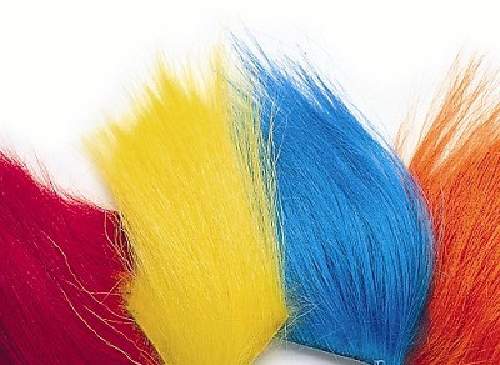Fly Tying Materials Advice
With so many materials available to the fly tyer we hope to offer advice inspiration and techniques to further your ideas, skills and ambition.
Hooks come in many different sizes according to their usage, saltwater and predator hooks are usually the largest and range typically in fly fishing from 5/0 down to 1/0 (aught sizes) then 1 down to size 10. Freshwater flies typically range from size 4 down to size 32!
Thread diameters were created in the 1930s. In the fly tyers have been using 6/0 threads, 8/0 threads, 12/0 threads. however in 1988 WAPSI fly introduced a thread called 70 UTC and 140 UTC for their UTC threads based on Dernier sizing. There has been confusion since! added to that all the threads have different breaking strains. Fined out the strength and size of major tying threads here.
Today's blog post discusses Black Magic Dry Flies, Salmon Hair Wing Flies, and Semperfli's Micro Glint which is great for buzzers.
Furs have been used for a long time from basic furs like Hare used in the GRHE (Gold Ribbed Hares Ear), Rabbit, Squirrel to Seals Fur a long used staple in fly tying dubbing and exotics like Cashmere and Arctix Fox and even Polar Bear. The modern fly tyer is becoming more aware of the environment and legal restrictions means many exotics and rare furs are not used in fly tying except in certain countries like Polar Bear in Canada where they are legally shot if invading towns. However with so many wonderful furs available and plentiful the fly tyers today uses more common furs for zonker strips (long thin strips used for winging) or as dubbing as in the Gold Ribbed Hares Ear.
Feathers ranging from cdc feathers as a buoyant material which are an incredible material to biots from wing quills are used with feathers for wings, as legs on spiders. Capes provide feathers for hundreds or even thousands of flies depending on the cape grade. What feathers are used in fly tying to create fishing flies? Typically today we use feathers from birds like: Duck, Turkey, Partridge, Pheasant, Peacock, Jungle Cock, Starling, Magpie, Snipe and most importantly Chickens, both hens and cockerels Find out more about fly tying feathers and their background in fly tying.
 Wool, and Yarns can be used in different ways in fly tying as follows:
Wool, and Yarns can be used in different ways in fly tying as follows:
- Wrapped around the hook
- twisted to form detatched bodies for mayflies
- burned to create caddis heads or
- used as tags
To tie flies well there are 7 basic techniques a fly tyer needs to learn. There are great clubs worldwide like the Fly Dressers Guild or many online videos to help you. The 7 basic essential techniques for a fly tyer are:
- Fixing the hook in the vice
- Attaching the tying thread
- Creating a Head
- Whip finishing
- Dubbing
- Winging Loop
- Forming A Collar Hackle
There are many specialist fly tying tools that are used for fly tying however there is an enormous range of materials in different colors and types, both natural and synthetic used for fly tying. What are the materials used for fly tying?
- Natural materials ranging from
- feathers
- furs
- cottons and silk thread
- wools
- threads
- plus an enormous range of evolving synthetic materials including
- mylar
- nylon
- polypropylene and
- antron







